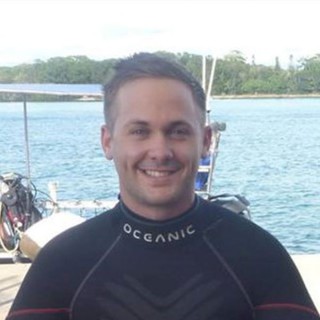We are now truly settled into our visit to Scott Reef and weather conditions have been ideal for deploying oceanographic instruments overboard Falkor. The science party have brought a vast range of equipment for measuring various oceanographic processes, from small wave gauges to large moorings. One of the key instruments brought on board is a turbulence profiler equipped with sensors that measure temperature, salinity, chlorophyll, turbidity, and mixing processes at very small (micro) scales as it freefalls through the water column.

The main goal for this research cruise involves linking physical oceanographic processes with the biodiversity of the reef. Successfully doing so provides great insight into the workings of the reef system as a whole and highlights susceptibility to issues such as climate change, ocean acidification, as well as assessing the potential impact of oil and gas activities in the region. While many people often associate physical oceanographic processes with large scale movements (e.g. tides and currents), the important role that small scale processes contribute to the big picture is often overlooked. The turbulence profiler has the capability to help tie in these small scale processes, using probes that take high resolution measurements that not only record a range of oceanographic variables, but also determines how quickly these variables change with respect to depth as the profiler heads toward the bottom of the water column. This information can be very useful, as some of these data can illustrate important mixing mechanisms that help drive primary productivity and transport nutrient rich bottom water into the near-surface reef lagoonal waters.

TurboMAP 9

The turbulence profiler on board Falkor is a TurboMAP 9, which stands for Turbulence Ocean Microstructures Acquisition Profiler. The TurboMAP is equipped with seven sensors designed to record a range of different oceanographic variables that help contribute to quantifying micro scale mixing mechanisms. Particularly important for this process are the detachable turbulence shear probes and fast-response temperature probe. These probes have the capability of measuring down to the micro scale by taking measurements at 512Hz – meaning they take 512 recordings every second as the probe descends at a drop speed of near 1 m/s! Due to their delicate nature, the installation of these probes require absolute focus to avoid contact with the tips of the sensors, as even the slightest touch can offset their accuracy or even destroy the sensors altogether!

One of the fantastic strengths of using the TurboMAP is that it records data in real time. This allows the science team to be able to look at the data coming through the laptop setup in the Falkorwetlab on deck. During deployment, the instrument initially sits at the surface of the water while attached to its own winch, which feeds data from the instrument through to the laptop. The laptop operator will use a walkie talkie to radio through to the winch operator once the instrument starts recording. This allows the winch operator to release tension on the cable and freefall the TurboMAP into the ocean depths. Radio communication keeps the winch operators informed about the depth of the instrument and once it gets close to the seabed, the winch stops the vertical descent, and then brings the probe back to the surface ready for another drop. The instrument can descend to 200 meters. After each drop, the instrument displays vertical profiles from all seven sensors on the shipboard computer, which can be analyzed before starting the next deployment. From the data that has been collected so far, we can already see very exciting information within different parts of Scott Reef!

